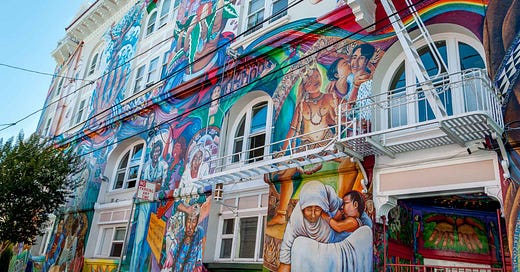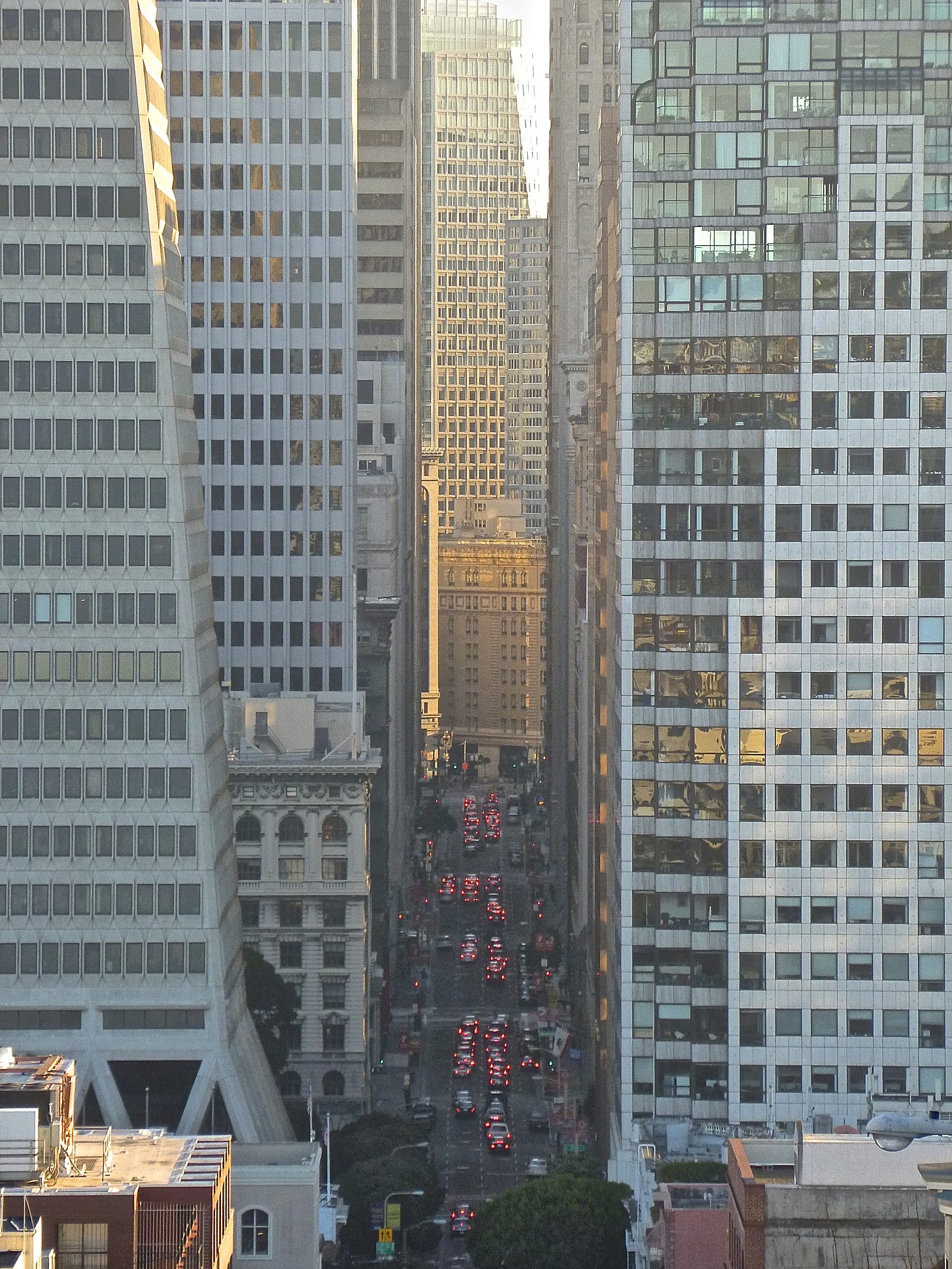The Silo Culture (mini-📝 19/100)
I happened across and finished this incomplete post from maybe a few months ago, thinking it was a different piece that I was recently working on. Usually, I lose the energy to finish a piece if it’s been a while since I worked on it, but for some reason, I was able to easily pick this one up again from the rough outline/word vomit that I had left at the end, and it was also interesting to “inhabit” an old frame of mind. I wonder if anyone intentionally leaves the frame of mind you inhabit in a particular essay to come back to it with a fresh perspective many weeks later.
I was biking around San Francisco this morning and had a renewed sense of awareness of the vast diversity of neighborhoods and populations that we have here. The Westworld-like, ultra-modern glass plazas of Dogpatch and Mission Bay, the grungy streets and loud taquerias of the Mission, the rush of grandmas and overflowing supermarkets in Chinatown, the post-college slightly more upscale college park hangouts of North Beach, and the list goes on. Each neighborhood has its own vibe and a core population that defines and embodies that vibe. Yet despite the presence of so many different distinct groups, they rarely overlap, and even when they do, it’s done so in inter-group bubbles and through scripted interactions (think tech bros getting their favorite burritos from the mission post-clubbing).
Mission District vs. Financial District in San Francisco
Across groups, we don’t talk to each other, and even when we do, it’s framed around something transactionalーan exchange of goods not of people or their stories. These interactions are easy and safe because no one has to change their default behavior. We live in silos of connection and relationship. We talk to the same people who we go to school with, work with, and mingle with. Social stigma stops us from going outside of these designated zones lest we be shamed for breaking the norm. Certain social groups are not supposed to mix because that’s just how it is. Just like there are certain bars for education for who can be a partner, there are certain bars for who can be a friend, a standard for who you’re allowed to care about.
Even if you don’t hold this belief, it can be incredibly hard to meet and really get to know people from different spheres because our spaces weren’t designed for this kind of interaction. The default behavior that our public areas encourage is for people to mingle within their circles, with structures (both informal like language and formal like patrolling security) to enforce that division. Because we don’t interact with other groups, we don’t understand their struggles, needs, and hopes. We only think about us and our tribe when we go to the voting booth, when we launch products, and when we write policy. And once the problems start, the opportunity for productive discourse has long past while the time for finger pointing and blame fights flourishes. Our defaults are all wrong for encouraging a connected and empathetic society, one that can work through hard problems in a healthy and unified manner.
Intimacy happens from proximity*, so how can we modify our default spaces to better encourage low-pressure, informal cross-pollination between different groups? What makes a good environment for cross-pollination?
Modern life is about being individually empowered and free and entrepreneurs and self-empowering and confident and self-love. This is great for a self-confidence boost, but the focus is all on the self, which engenders a culture of individualism where we feel like we shouldn’t ask anyone for help. We can do everything ourselves, so we should do everything ourselves to prove it to the world. This rise coincides with the rising feelings of isolation and depression because our individual focus causes us to constantly compare with others. How can we love ourselves without taking note from all our idols and our peers that post the very best images of themselves in every crevice of our digital experiences? It’s ironic that the image of the century is one of entrepreneurship and self-love, yet we still derive validation from what other people say about our take on taking charge of life and loving yourself. We are after the aesthetic of self-empowerment and self-love to derive love from our community, instead of the substance of that empowerment that allows us to transcend this need for external validation.
A description of Jane Jacob’s ideal city design, free of cars:
People would get off the train and walk, and walking (without fear of traffic death) would change the urban landscape, away from the shopping plaza, the parking lot, the gas station, and the roadside sign to townhouses, cafés, bookstores, the kind of places that encouraged pedestrians to linger, and their presence would spur other businesses to cluster, and before long there would be density—Jane Jacobs’s heaven. Strangers would meet in nontraumatic accidental encounters and exchange ideas.
The Unwinding by George Packer
How can humans enable interoperability and promote a culture of healthy self-empowerment, the ability to know that you are enough the way you are and want to participate in and contribute to a community?
The idea of interoperability and silos is so fascinating as I’ve started to see trails of it everywhere now. The silos of community that we’ve formed in our cities, divided along racial and socio-economic and political lines. The corporate data silos that our manufactured digital content are held hostage in, with few common formats to rely on and fewer incentives to create high-fidelity export options. The mini supercomputer silos of our personal computing devices, a gateway to a personalized and completely unique digital world, which masquerades as the real world. Whether by design or by chance, there are silos trapping us everywhere, but the lines of the limits are invisible until you start looking for it intentionally. How might we break down the silos to allow for more interoperability and cross-pollination of ideas, perspectives, and media in a way that is healthy (sustainable long-term for human cross-pollination and secure for data cross-pollination)?
This is the 19th installment in my experiment of publishing raw, lightly edited mini-essays every day towards achieving 100 public pieces. Check out the rationale and the full list here or view my evergreen, longer pieces on my website.
If you liked this post, I would be grateful if you shared it with a few friends. And if you’re not already subscribed and would like to get updates, you can do so below.





